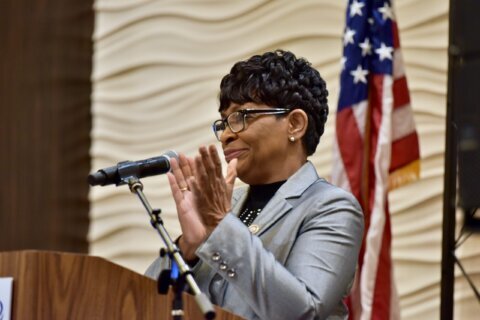This article was republished with permission from WTOP’s news partners at Maryland Matters. Sign up for Maryland Matters’ free email subscription today.
This content was republished with permission from WTOP’s news partners at Maryland Matters. Sign up for Maryland Matters’ free email subscription today.
The deadline for Maryland schools and restaurants to stop using polystyrene foam food containers and cups has been extended from July 1 to Oct. 1, the Maryland Department of the Environment decreed in an order this week. Polystyrene foam is commonly known under a trademark name, Styrofoam.
A week after declaring a state of emergency in Maryland due to the outbreak of COVID-19, Gov. Lawrence J. Hogan Jr. (R) issued an order called “Extending Certain Licenses, Permits, Registrations, and Other Governmental Authorizations, and Authorizing Suspension of Legal Time Requirements.” In response, the Maryland Department of the Environment announced that it was necessary to extend the deadline on the foam ban.
Schools and restaurants can now use their backstock of styrofoam until Oct 1 to alleviate the harm caused by the COVID-19 pandemic, the agency said. The ban on the sale of foam is still July 1.
“The extension of the deadline for schools and food services businesses to discontinue their use of expanded polystyrene products is very limited and is to allow the use of existing supplies of these products for an additional time while maintaining the effective date of the ban on their sale,” said Jay Apperson, a spokesman at MDE. “This does not affect or alter the effective date of any county or municipal law limiting the use of EPS (expanded polystyrene) products.”
In April 2019, the legislature passed a bill that banned foam products, making Maryland the first state in the country to go foam-free. Del. Brooke E. Lierman (D-Baltimore City) and Sen. Cheryl C. Kagan (D-Montgomery) sponsored the foam ban bill together. It took Lierman three attempts to pass the bill — and one of the concessions made to skeptics was to put off implementation of the legislation until this year.
Once the bill went into effect, schools and restaurants had 18 months to go through any styrofoam they had left in stock and prepare for the July 1 deadline.
“They got a lot of advanced notice,” Kagan said Friday.
Fifty-two percent of Maryland’s residents were already living under a styrofoam ban, since counties like Montgomery and Prince George had enacted a foam ban prior to the passage of the statewide bill, according to Kagan.
The bill also included a waiver, which allows schools or food service businesses to apply to ask for an exemption from the law if they were experiencing hardship for up to one year.
Kagan said she was not aware of any waiver applications in the last year and a half. But if anyone was experiencing hardship because of the pandemic and an wanted exemption, Kagan said that applying for the waiver would have been the right path.
Instead, the state has decreed a blanket three-month extension to the bill, which Kagan thinks is “irresponsible and unnecessary.”
Kagan said she was surprised that a Styrofoam ban suddenly became a public health emergency three months after the governor had declared a state of emergency.
“This came out of nowhere. We had no advanced notice,” she said. “Somehow this was the solution to a question that no one was asking.”







